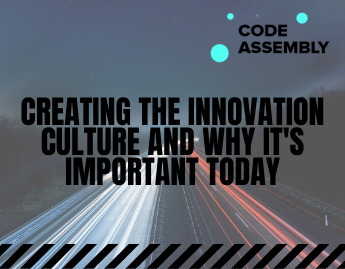
How to Use Technology for Improving Food Delivery App
#Tech Label January 29th, 2021The food delivery market has experienced a significant transition in the last few years. New technologies enable shoppers to prepare and purchase online on the go making this transition feasible. With remarkable advances, technical food supply providers have managed to take in a large proportion of the food supply sector. Anyone seeking to develop a role in the food supply field should track closely recent developments and inventions to offer similar technology and services in the food supply industry. In the age of COVID-19, food supplies became a key business, causing people to sit home and cutting personal ties in workplaces, stores, shops, and restaurants. And any supply provider around the world would like to improve the customers, accessibility, and modernity of its supply apps.
What is a food delivery app?
A food supply app is a mobile application that enables consumers to order food on their smartphones or tablets from any of the cafes in the region. Food supplier is the idea of a restaurant or fast food order or call, the restaurant will then cook the stuff you requested, and then forward a carrier or a driver to your location to distribute the food.
How does the food delivery system work?
The food delivery model provides complete cooperation support as opposed to a restaurant taking facilities. Food supply platforms are an outstanding asset for new enterprises, small restaurants and cafes, and other smaller companies. As new applicants often need more assets in order to create their own supplies, they are going to organizations, which offer such aid for expenses. Restaurants no longer have to worry about the delivery board with food services – no employees, no transportation, no-cost management, etc.
1. Order placement
The user needs to download and installs the food delivery app. Then, he starts an application and chooses the restaurant from which he needs to purchase, chooses and adds food items to the cart by browsing the menu. The buyer makes the payment upon which the order is placed following the selection of the order. Then he can begin to follow the order status.
2. Order processing in the restaurant
If an order is made via a food delivery app, the restaurant will receive a message in the app. The hotel can accept or dismiss the request. When the food preparation staff accepts the request, the app will automatically print orders for the cooking staff. When the restaurant personnel verifies an order, a message is automatically sent to the nearby delivery person arriving at the restaurant and picking up the food.
3. Delivery by the delivery person
When the delivery boy gets the hotel app note from a hotel, the driver will look at the restaurant location and use the map to access the restaurant. He waits then until the food is ready. After the order has been filled, the driver takes the order and through the navigation on the smartphone to bring the food to the customer’s premises. Buyers will watch the status of their live order, monitor the position of the delivery person, and predict their arrival time in their smartphone.
4. Delivery of food and customer feedback
The customer gets food and the state of the order changes to ‘supplied.’ In the app, the customer will check/rate the order and provider.
Why should one use Food delivery Apps?
-
Convenience and quality
Comfort and quality are the two elements of the food delivery application that buyers want to use. The food supply applications have given the food industry a new prospect to serve consumers and restaurants. Directly from pickups to home delivery, from phones to mobile apps, consumers would like simplicity and hassle-free services. The next major trends in food delivery services are buying from mobile applications.
Using Tech for Improving Food Delivery App
Since COVID-19 reached our home turf, food supply applications have boomed in magnitude and prominence. Such implementations require time when social isolation becomes a solid rule. It works for customers and it cannot be better than food that is served at the gates. Restaurants and companies are expanded through such distribution platforms. The pandemic has turned these organizations’ workers into modern-day fighters.
-
The rapid increase in food delivery applications
According to the latest report, the first quarter of March 2020 saw a food supply service increase of 512 per cent. Following the coronavirus disease outbreak which has prompted customer social distance and residence orders to be carried out, it is predicted that the food supply industry will begin to rise 509 per cent by the end of 2021. Customers now aspire to find Online Food Ordering Technologies simple, user-friendly, and stress less. They bought groceries already for $30 billion in 2015 and the market was favoured by the coronavirus pandemic. So many more restaurants are collaborating or want to create a mobile food delivery system to serve their daily customers. The food supply software, given below, has completely altered our way of eating.
Freshly: As the name indicates, it provides customers around the USA with meals ready to be served. The facility of the organization provides food. Since working with FedEx for home products around the US, it became the number of food corporations.
UberEats: Introduced in 2014, it helps customers to tailor their tastes and recommends orders, favourite foods, and fast meals near. This filter has been obtained by food enthusiasts.
Plated: it is a meal kit platform that started with a high-end food chain service model in 2012. They soon launched an Android food supply app that makes them a leading food services website.
-
Monetization of Food delivery Apps
In this piece of article, we explain applications for food supply, how to manage requests, and transport models. So how do we figure out how money is being paid for this operation? The shipping rate of UberEats now depends on distance. Glovo, on the other hand, uses a fixed rate that varies on the country (but typically around $2-3). Doordash costs $0.99 – $7.99 plus mailing charges + a 7-15% delivery fee per request. Grubhub charges 20% ad fees, 10% distribution, and 3% transaction charges. Devilry services also help cafes by paid promotion to enhance their services. There are also 4 key forms to monetize the food delivery apps include the fixed delivery fee, restaurant commission, and in-app advertising.
-
Making Food delivery apps personalized by adding different features
As food applications are now a significant part of our day-to-day routines, they obtain customer trust and thus a customized strategy takes on the role. Through a personalized plan, consumers will monitor the shipping boy and even contact him from the application right from the moment of shipment. It seems simple, though, because it has a substantially greater effect on the time when food is delivered and who is supplying the food and is committed to consumers. Below are several forms of customized food supply approach:
Notification: Message on the user’s handset notification bar has a major beneficial influence and distinguishes the application.
Personalized message: The development of a personalized message focused on prior customer transactions will help you make smarter decisions.
Customized layout: Let users tailor their expectations to their likes, favourite cuisine, and preferred cafe.
-
Incorporation of Artificial Intelligence into Food Delivery Apps
Given the changing actions of its consumers, artificial intelligence has been increasingly implemented by the food supply networks in recent times. With the combination of AI and machine learning technologies, future mistakes can be reduced and user experience improved. In addition to restaurants where food is presented, AI will also allow you to create an extraordinary user experience. Eateries may use AI to forecast additional food requirements given a set of input. They appear to have a more tailored AI experience. AI enhances opportunities for decision-making and affects fast commands.
-
Integration of Augmented Reality and Virtual Reality into Food delivery apps
Augmented reality will assist restaurant owners to reach potential clients. For example, prospective buyers may be approached via social media by encouraging them to see 3D versions of their menus and other interesting stuff in their cafe. It would be better for people to pick whether they really need to go there or not if they think like they are already in a restaurant before getting to it. Assume a buyer staring at a restaurant menu and looking at 3D versions of different food items before deciding about what to purchase. What if you could search a restaurant menu and put your order directly from a smartphone app.
-
Addressing global food wastage through Food Delivery apps
Global food waste can be tackled by food delivery applications. The bakery, food shops, and banquet halls will get rid of leftovers and distribute them to poor people with an acceptable app. One such initiative is ‘Food for all’. It contacts bakery, cafes, and wedding caterers and supplies their food at a cost of half that rate. Thus everybody can have a full meal at only $2.
New trends and themes of Food delivery
The progress of technology no longer prevents the online foodservice industry to serve its clients through human capital. By combined with parachutes, robotics, and drones, they can accelerate delivery, hold operational costs lower.
-
Drones
In 2016, in less than 5 minutes Dominos shipped two pizzas to a client. Drone shipments will eliminate traffic and therefore eliminate unnecessary shipment time, reducing businesses running costs.
-
Robot
In conjunction with AI and auto transmission systems, Starship technology has developed droids in the UK for food distribution. These 6-wheel droids will travel on a radius of 10 kilometres up to 4 kilometres per hour. In addition, GPS is used to maintain customer communication for transportation, camera systems, and Ethernet.
-
Parachutes
Often recognized to buyers as a float-down eatery, they can stay at a certain time and collect their food at the drop-off position labelled X. This is also a creative food supply strategy.
Fresh and novel approaches for food ordering
There are various new methods available to order food online. Some of the most commonly used methods are described below.
-
Intelligent watches
In recent times, the proliferation of smart vehicles has kept growing. People can now buy food from a smartwatch that works on iOS or Android software platforms. Assume you’re capable of buying meals from your own hands. Several well-known food corporations have built smartwatches food supply applications. For example, customers can request Domino’s pizza from the Android Smartwatch. Consumers of Apple Watch will purchase with the OrderUp app from multiple restaurants and carry locations. It helps you to interact with individuals who take your food and give it to you.
-
Mobile phone
Smartphones and tablets will also order pizzas using your speech. You can chat about putting your order for pizzas with a digital assistant called “Dom.” If you’ve ever spoken to Siri on your smartphone previously, so Dom is the same. In reality, you don’t have to call Domino. You will basically tell the simulated worker what you want and give your request to the cafe. You can also switch between mailing and distribution. Even Dom proposes you too to make coupon offers.
-
Intelligent cars
You can transform your smart car into a rim pizza buying device. Including Visa for Money Transfer and Accenture for Application creation, Pizza Hut is the pizzeria behind the application. Deposit from the touchscreen of your car is possible and you can put your order. You don’t even have to separate the steering wheel from your hands. The whole process of ordering is done with your speech.
Professional tip for an improvement in the food delivery apps
-
Keep your food delivery updated at all times
It is crucial that you must update your food delivery app all of the time if you are looking to build and retain an advanced mobile app for your food business. To add the user experience more fun and comfortable, you can still introduce additional functionality to the software.
-
Spot and correct immediately any malfunction in your food delivery application
Quite notably, you must detect malfunctions in your food delivery app and then operates to fix them instantly. Alternatively, if someone orders on an app that malfunctions, it will offend and disturb buyers. This could lead them to pick another eatery.
-
GPS tracking and real-time updates
For your food distribution program, send your clients GPS monitoring and real-time alerts. Modern consumers are involved in the latest updates on the status of their order, for example where their delivery driver is actually based. Nobody needs some longer to sit and think.
What are the prospects of Food delivery apps?
The moment is close where people demand an app from every restaurant and want delivery systems and more collection opportunities. The distribution systems will provide electronic orders, such as on Monday nights whereby shoppers have baseball games or kids who are too occupied to prepare. The buyers also want a great range of food items and components. Food services should be included in the app to satisfy criteria and to boost customer loyalty; eateries would have to upgrade their sites.
Hotels are supposed to introduce Facebook orders as a means to boost revenue, and customers want modern innovations, like table-top ordering and check-out for hotels. Other technologies include interactive fast-food menu boards, available to users on the smartphone. Moreover, the increase in ghost kitchen will potentially improve, with cafes relying only on the take-out market and attract more shoppers without having a seating area based on delivery services such as DoorDash.
Technology’s impact on food production is not limited to eateries. Progressively, grocery stores use technologies to authorize the customer to shop electronically and receive or distribute them. People see more shopping centres introducing tablet orders, where the customer places their order and then waits for it. These results might influence other sectors, such as the entertainment industry, as fast food shops add video games that are estimated to the ground and are handled by motions to keep children entertained while families wait for deliveries. The impact of technology on food supply is a major revolution.
In the end, the Food delivery app is a novel method one can use to order and eat food. For consumers placing or monitoring orders, food supply apps are not merely a simple method. It is also a good marketing strategy for restaurants to meet and secure their interest in new clients. The apps will give prospective buyers unique offers and deals on some foodstuffs, notably if they order a restaurant service for the first time. See FoodPanda and UberEats for instances of how consumers are reached through discount codes and exclusive deals. For your submission, you will do the same sort of thing. Particularly, try to keep it simple for buyers to have and run your food delivery app. For order location, monitoring orders, and contact in the kitchen, the application should be easy for using In order to build your app; you can add any of your best functionality to the application and maybe build a few advanced functionalities that no one else uses.
Have an upcoming project?
We're are ready to give up you a professional advice and free cost estimate.
More amazing articles to read




